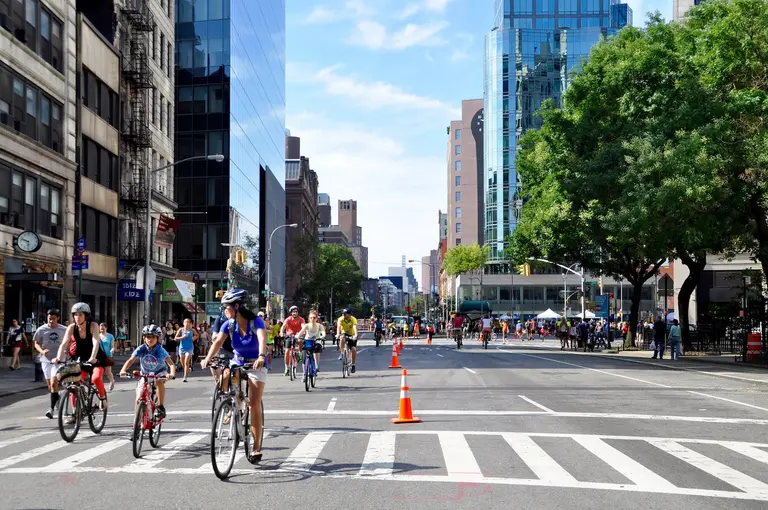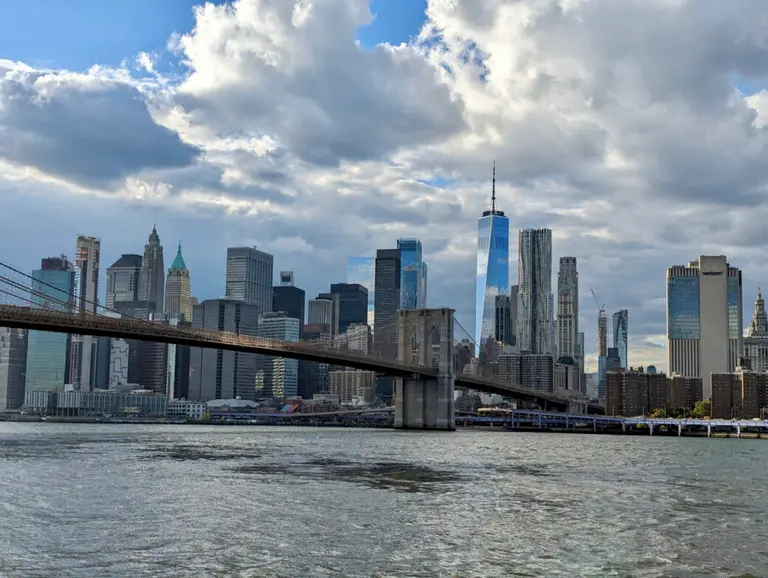The closing of neighborhood grocery stores is leaving local shoppers stranded

An important must-have when apartment hunting often involves the presence of a grocery store within a few blocks. A local food market, regardless of how harsh its fluorescent lighting or how narrow its aisles, is often the key to feeling part of civilization, especially when you’ve run out of milk for breakfast. The familiar branches of local chains–from Key Food to D’Agostino to the corner deli–are closing down across the city, in some cases leaving New Yorkers in something of a “grocery desert” surrounded by restaurants but without access to fresh ingredients and emergency baby supplies. According to the New York Times, the landscape is definitely shifting: Between 2005 and 2015, about 300, or eight percent, of the city’s greengrocers–defined as “family-owned stores of less than about 7,000 square feet”–closed up shop and left the neighborhood.

According to the managing director of retail consultants Strategic Resource Group, whose study yielded the above findings, “New York City is worse than New Orleans post-Katrina,” with a growing shortage of neighborhood grocery stores. Many of these stores aren’t in newly-gentrified neighborhoods; indeed many of them–D’Agostino and Garden of Eden to name a few–are in neighborhoods like the Upper East Side. Stores like Garden of Eden, which opened in 1932 and recently filed for bankruptcy–sometimes cater to wealthier “gourmet market” customers of yore, which makes them especially beloved to elderly shoppers who may be unable to get to farther-flung supermarkets.
Although this particular trend might be most notable in Manhattan, it can be observed throughout the city. A significant contributor to the small and medium neighborhood grocery chains’ struggle with narrowing profit margins is landlord greed: “The rent is too high–nobody is making ‘money money,'” according to John Catsimatidis, billionaire owner of the Gristedes grocery chain that first launched 48 years ago. Gristedes stores may have been somewhat immune to the problem in part because Catsimatidis’ conglomerate Red Apple Group owns the stores, bringing in money from, among other things, an oil refinery.
Increased competition from upscale supermarkets and online grocers and the recent proliferation of chain drug stores like CVS and Walgreens are also cutting into the profits. 30 percent of items sold at the drugstore chains, according to a CUNY study, are consumables.
The familiar mix of large specialty chains like Fairway, smaller grocery chains like Associated and a smattering of corner bodegas makes for a convenient landscape for food shopping, giving shoppers the ability to compare prices and seek out the freshest produce, for example. An important part of neighborhood desirability has traditionally been linked to a variety of food retail.
At the same time, neighborhood populations are surging. New high-rise residential buildings–some of which, ironically, have replaced grocery stores–have brought an influx of new residents to areas that find themselves oddly without grocery options nearby. Though there are about 170 more supermarkets in the city than were present a decade ago, that growth has remained flat in more recent years. And the stores that replace the old ones might be vastly different from the neighborhood’s perspective, such as was the case with a shuttered Pathmark on 125th Street in Harlem. The moderately-priced grocery chain store’s “replacement” (at least statistically speaking), was a Whole Foods that was also a 10 minute walk from the former store’s location.
Many longtime neighborhood residents tell a similar tale: When the Pathmark at 227 Cherry Street on the Lower East Side closed to make way for a luxury residential tower, Natalia Padilla, a saleswoman at Citi Habitats and lifelong neighborhood resident, says, “It was like someone died.” Similarly, South Slope residents were stunned when a local Polish grocery, Eagle Provisions, closed last year: “These are unique relationships that you had with these shopkeepers.” The building has since sold for $7.5 million as a redevelopment site.
[Via NYT]
RELATED:



























